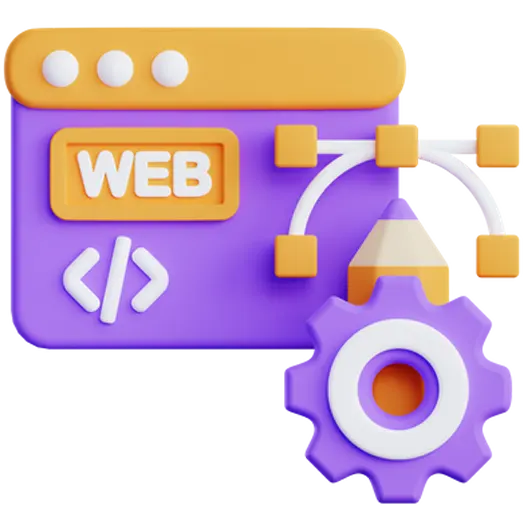
SQL vs. NoSQL: Choosing the Right Database for Your Project
Choosing the right database is a crucial decision for any web development or IT project. The performance, scalability, and maintainability of your application heavily depend on it. The two primary database models are SQL (Relational) and NoSQL (Non-Relational). Understanding the differences between them is essential for making an informed choice. This article provides a comprehensive overview of SQL and NoSQL databases to help you determine which one best suits your specific needs.
Table of Contents
- What is SQL?
- What is NoSQL?
- Key Differences Between SQL and NoSQL
- When to Use SQL Databases
- When to Use NoSQL Databases
- Examples of SQL and NoSQL Databases
- The Importance of Digital Transformation
- Frequently Asked Questions (FAQ)
- Conclusion
What is SQL?
SQL, or Structured Query Language, is the standard language for managing data held in a relational database management system (RDBMS). SQL databases are based on a relational model where data is organized into tables with rows and columns. Relationships between tables are defined using foreign keys, ensuring data integrity and consistency. Common SQL databases include MySQL, PostgreSQL, Oracle, and Microsoft SQL Server.
What is NoSQL?
NoSQL, which stands for “Not Only SQL,” encompasses a variety of database technologies that deviate from the traditional relational model. NoSQL databases are designed to handle unstructured or semi-structured data and are often preferred for applications requiring high scalability and flexibility. There are several types of NoSQL databases, including document databases, key-value stores, column-family stores, and graph databases.
Key Differences Between SQL and NoSQL
Understanding the key differences between SQL and NoSQL databases is crucial for making the right decision for your project.
Data Structure
SQL: Uses a structured, tabular format with predefined schemas. Data is organized into tables with rows and columns.
NoSQL: Offers more flexible data models. Data can be stored as documents (JSON, XML), key-value pairs, columns, or graphs.
Schema
SQL: Has a predefined and rigid schema. Changes to the schema can be complex and require migrations.
NoSQL: Offers a dynamic or schema-less approach. This allows for easier adaptation to changing data requirements.
Scalability
SQL: Traditionally scales vertically by increasing the resources (CPU, RAM) of a single server. Horizontal scaling (adding more servers) can be more complex.
NoSQL: Designed for horizontal scalability. Data can be distributed across multiple servers, making it easier to handle large datasets and high traffic volumes.
Query Language
SQL: Uses SQL as the standard query language, providing a powerful and consistent way to retrieve and manipulate data.
NoSQL: Employs various query languages specific to the database type. These languages can be less standardized than SQL.
Transactions
SQL: Supports ACID (Atomicity, Consistency, Isolation, Durability) transactions, ensuring data integrity and reliability.
NoSQL: May offer eventual consistency rather than ACID transactions, which can be suitable for applications where immediate consistency is not critical.
When to Use SQL Databases
SQL databases are a good choice when:
- Your data requires strong consistency and ACID properties.
- Your data is highly structured and relational.
- Your application requires complex queries and joins.
- You have a well-defined schema that is unlikely to change frequently.
When to Use NoSQL Databases
NoSQL databases are a good choice when:
- Your data is unstructured or semi-structured.
- You need to handle large volumes of data with high scalability requirements.
- Your application requires rapid development and frequent schema changes.
- You need to store and retrieve data in a flexible and dynamic manner.
Examples of SQL and NoSQL Databases
SQL Databases: MySQL, PostgreSQL, Oracle, Microsoft SQL Server
NoSQL Databases: MongoDB (Document), Cassandra (Column-Family), Redis (Key-Value), Neo4j (Graph)
The Importance of Digital Transformation
In today’s rapidly evolving technological landscape, businesses must embrace digital transformation to remain competitive. As our CEO always says, “Digital transformation is not an option, it’s a necessity to stay relevant.” Choosing the right database is a crucial step in this journey, enabling you to build scalable, efficient, and data-driven applications that meet the demands of the modern marketplace.
Frequently Asked Questions (FAQ)
Q: Which database is faster, SQL or NoSQL?
A: The speed depends on the specific use case and data structure. NoSQL databases are often faster for simple read/write operations and handling large amounts of unstructured data. SQL databases can be faster for complex queries and transactions on structured data.
Q: Is it possible to use both SQL and NoSQL databases in the same application?
A: Yes, it is possible and often beneficial to use both SQL and NoSQL databases in the same application. This approach, known as polyglot persistence, allows you to leverage the strengths of each database type for different parts of your application.
Q: Which database is easier to learn, SQL or NoSQL?
A: SQL is relatively easier to learn due to its standardized query language and well-established principles. However, the ease of learning NoSQL depends on the specific type of NoSQL database and the chosen query language. Some NoSQL databases offer more intuitive interfaces than others.
Conclusion
Choosing between SQL and NoSQL databases is a critical decision that impacts the success of your IT project. By understanding the strengths and weaknesses of each database model, you can make an informed choice that aligns with your specific requirements and goals. Consider your data structure, scalability needs, and consistency requirements to determine the best fit for your application.
If your business needs an efficient website or digital system, contact the Doterb team today. We can help you choose the best database for your needs and build a solution that meets your business goals. We are experts in both SQL and NoSQL technologies and can guide you through the entire process.
